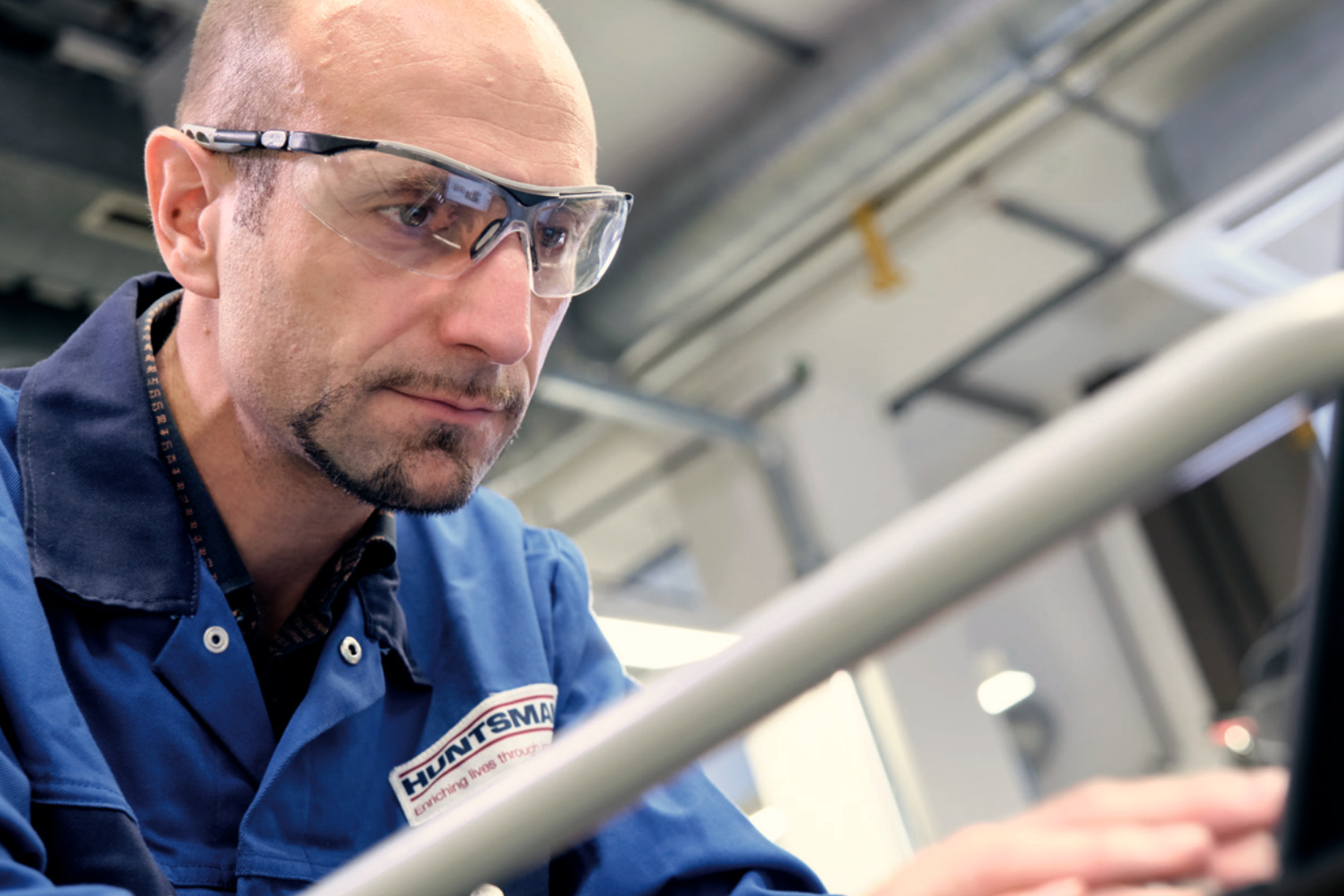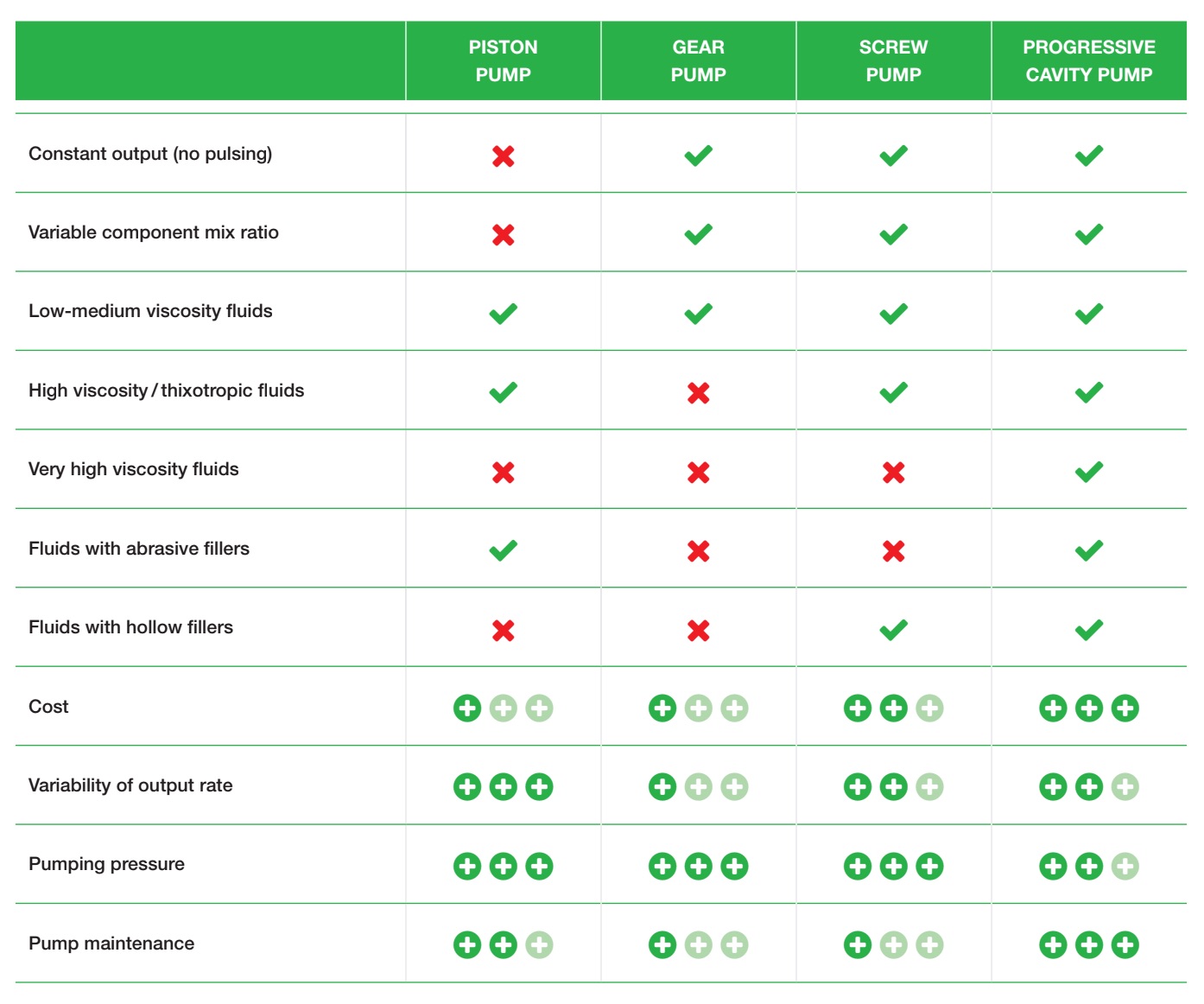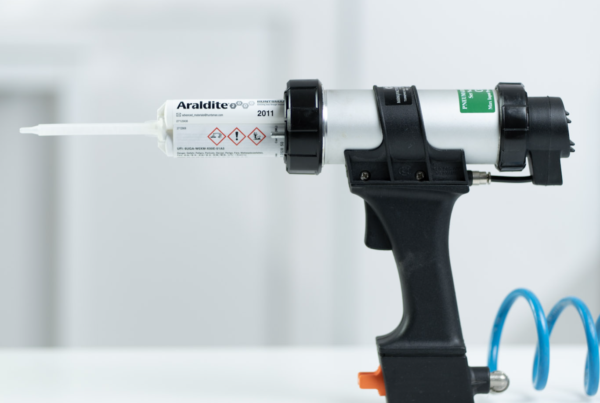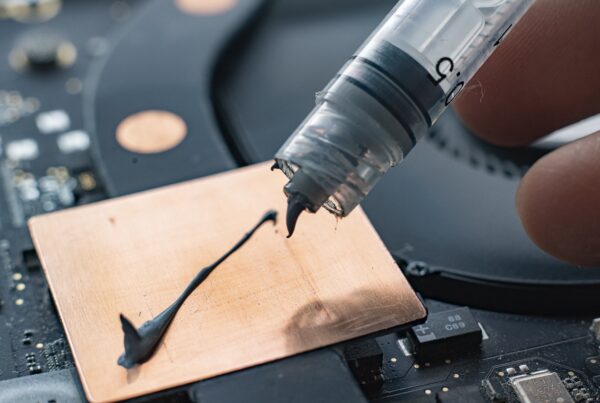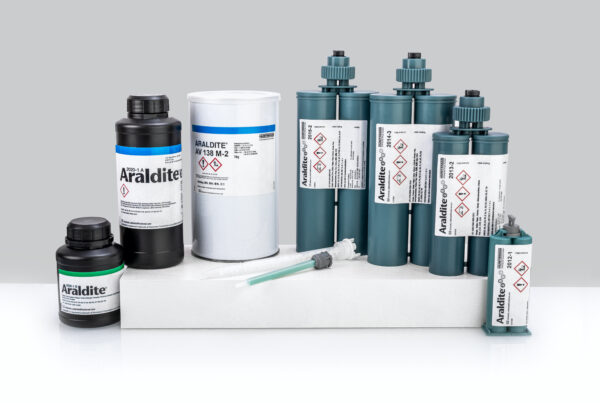How to choose the appropriate dosing machine
Dosing mixing equipment allows two-component adhesives to be dosed directly from bulk packages (pails, drums or tanks).
Metering pumps have different technical characteristics that make them more or less suitable for certain types of products.
Factors to consider when choosing the type of metering pump are as follows:
- Output speed
- Consistency/accuracy of pumping
- Flexibility in changing component mixing ratios
- Adhesive viscosity/rheology
- Suitability for use with abrasive or light fillers in adhesive components
- Cost and maintenance of the pump
Gear pumps
A gear pump works with two driven and intertwined gears inside an enclosed chamber that, as they rotate, move a predetermined volume. Product is sucked in by the rotating gears at the inlet and pushed out when the gears mesh at the outlet. This type of pump works with low- to medium-viscosity materials and offers consistent output combined with accurate volume control. The speed of each pump is variable, which means the mixing ratio can be easily adjusted.
Because the pumps rely on closely interconnected gears, they are not suitable for products containing abrasive fillers, which can wear out gear parts.
Gear pumps can damage light charges (hollow microspheres) by causing a change in material density.
The relatively high shear rates generated by gear pumps can alter the rheological behavior of some thixotropic (overshear) adhesives, causing failure or slumping.
BENEFITS
- Constant output without pulsation
- Extremely accurate output
- Can develop high pressures
- Easy to modify with electric stepper, chain or gear motors
- Ease of changing the mixing ratio
DISADVANTAGES
- Cannot work with abrasive filling systems or hollow fi lters (crushing)
- Limited power for each pump size
- Because of the close tolerances of the pump components, they must be kept clean
- Can only be used for low to medium viscosity products
- May cause excessive degreasing of the product due to pumping action.
Piston pumps
This type of pump works with a reciprocating piston system: one stroke of the piston fills a volumetric chamber, while the opposite stroke unloads it. Piston pumps generally provide accurate volume control and can be used with a wide range of material viscosities, but performance is not constant due to the reciprocating nature of the pump. Some equipment uses a series of two pistons working in opposite cycles to increase the consistency of production.
The overall flow rate can be controlled, but the volume ratio between one component and the other can be determined by the bore of the piston (cylinder). This means that changing the adhesive mixture ratio may require the installation of alternative pistons/cylinders.
High pressures can be generated during the fill-and-dump cycle, especially with highly viscous or thixotropic materials. This can cause the hollow microspheres to break down and lead to gradual heating of the equipment (and adhesive) during the application period, causing a change in reactivity. Compressible materials are particularly prone to heating with this type of pump. Piston pumps are relatively inexpensive compared to other types of pumps.
BENEFITS
- Very reliable
- Very accurate
- Relatively inexpensive
- Handles virtually all adhesive systems, low to high viscosities, and thixotropic materials
- Variable production and variable ratio
- Simple and well-developed technology
DISADVANTAGES
- Difficulty in achieving consistent production
- Some hollow materials, such as mineral spheres, can be crushed, resulting in a change in product density.
Screw Pumps
Screw pumps operate with one or more rotating Archimedes screws (spindles).
Pumps for viscous materials, such as adhesives, typically use two or three spindles rotating in opposite directions within an enclosed chamber. The continuous rotation of the screws produces a volume shift, transferring product from the inlet to the outlet.
Screw pumps have similar characteristics to gear pumps, but they generate lower pressures/less abrasion, which means they are more suitable for the use of lightweight fi lters (hollow microspheres).
Screw pumps are suitable for use with medium and high viscosity products.
However, these pumps are generally more expensive than gear pumps.
BENEFITS
- Constant output without pulsation
- Extremely accurate output
- They can develop high pressures
- Ease of output modification with electric stepper, chain or gear motors
- Ease of changing the mixing ratio
- Gentle on the product – can operate at low pressure
DISADVANTAGES
- Struggles to achieve high production with high viscosity products
- Cannot work with abrasive filling systems.
- Due to the close tolerances of pump components, it is necessary to keep them clean.
- May crumble the product due to pumping action.
Single screw progressive cavity pumps
Progressing cavity pumps are somewhat similar to screw pumps, but operate on a different principle.
A rigid helical rotor forms cavities inside a specially shaped elastomeric stator. As the rotor rotates inside the stator, the cavities move from the inlet to the outlet, transferring the material. In this sense, the principle is similar to that of a peristaltic pump.
The efficiency is constant and is changed by varying the rotor speed. Progressing cavity pumps can be used for very high viscosity fluids or for fluids that are difficult to pump, such as those with very high fill levels.
Progressive cavity pumps apply low shear levels to the pumped material, making them suitable for light fills (hollow microspheres). The shape of the cavities also makes them suitable for pumping fluids with large fill particles.
Cavity pumps may exhibit slippage, that is, material passes through the spaces between the rotor and stator. This worsens as parts wear out and can lead to inaccurate pumping rates. The elastomeric stator must therefore be replaced regularly to ensure pumping accuracy.
BENEFITS
- Excellent for very high viscosities and other difficult fluids
- Can handle fluids containing air, multiphase and abrasive
- Precise dosing
- Suitable for high and low viscosity applications
- Enables continuous, gentle, low-pulsation flow
- Very accurate as a metering pump
DISADVANTAGES
- These pumps fail if they run dry
- They do not produce high flow velocities
- Volumetric efficiency is compromised if the viscous fluid does not enter the pump quickly enough
- They can only pump a limited distance
- Slip rates can be high if parts are worn.

